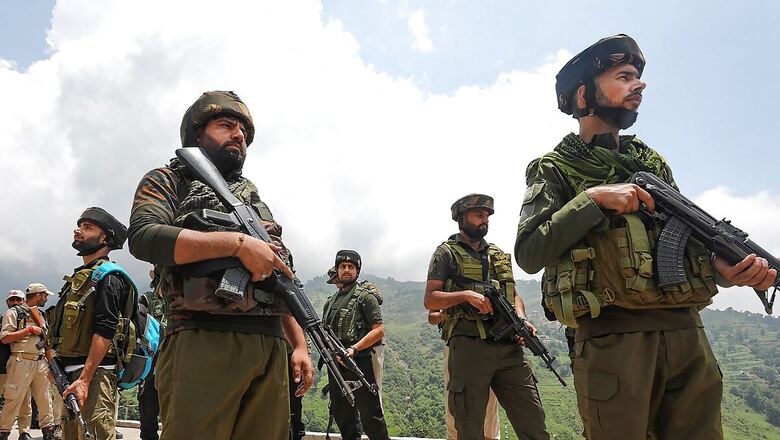
views
In a major development, security forces have been asked to cover hilly areas in three regions in Jammu and Kashmir. This comes amid a rise in terror attacks in the Jammu region, the latest being the Doda attack. An Army officer and three personnel have been martyred in a gunfight with terrorists in a forest area in Doda district on Monday night.
According to top-level sources, Doda, Poonch, and Rajouri, which are witnessing terror attacks on forces and civilians, will have area-wise deployments to tackle terror. Officials claim that after almost two decades, a large quantity of troops will be deployed in these three areas along with required vehicles, weapons, which used to have very limited numbers of jawans.
Without sharing many details about the move, a senior official said that more than 50 locations have been identified for the domination of security forces. The approach is to address terror activities in these strategically critical areas. A robust security presence across all identified locations within these districts will be established in the next few weeks, with the primary objective of creating a well-coordinated security grid designed to cover equal distances between each of these locations, tightening control over the terrain, and effectively tackling terrorism.
The new strategy includes the deployment of multiple security forces. While the Jammu and Kashmir Police will be the main coordinating and leading force, the Central Reserve Police Force (CRPF) will lead in the number of troops deployed on the ground. Additionally, the government has planned to deploy the Rashtriya Rifles (RR), and areas close to the border will have the Border Security Force (BSF). Officials are also expecting that the Indo-Tibetan Border Police (ITBP) may be deployed, considering its experience in hilly areas like Ladakh.
The decision on the specific forces is yet to be finalised, but as per discussions, a senior official told News18 that all forces will support each other in operations, and reinforcement will reach in a much shorter time. As forces begin their deployments, there is cautious optimism that this new approach will achieve the intended results and contribute to long-term peace and stability in Jammu and Kashmir.
Apart from troop deployment, the government has also been focusing on technological advancements for the forces and their training for hilly areas. The CRPF has decided to gear up for “mountain warfare” after noticing a change in the modus operandi of terrorists who are shifting from urban areas to the more challenging terrain of forests at higher reaches. The force will be trained in mountain warfare to deal with terrorists, and during a high-level operations conference held recently, suggestions were also made to involve other forces, such as the ITBP, for the same purpose.
Similarly, the CRPF has been testing and exploring high-tech, AI-enabled UAVs for the next level of operations in Jammu and Kashmir and against Naxals amid a spate of terrorist attacks. The process of testing advanced UAVs is underway, with trials being conducted to develop the next generation of drones with enhanced capabilities. These UAVs will require minimal human intervention and will be capable of performing surveillance, reconnaissance, and operations based on Artificial Intelligence (AI) technology, a senior CRPF official said.
















Comments
0 comment